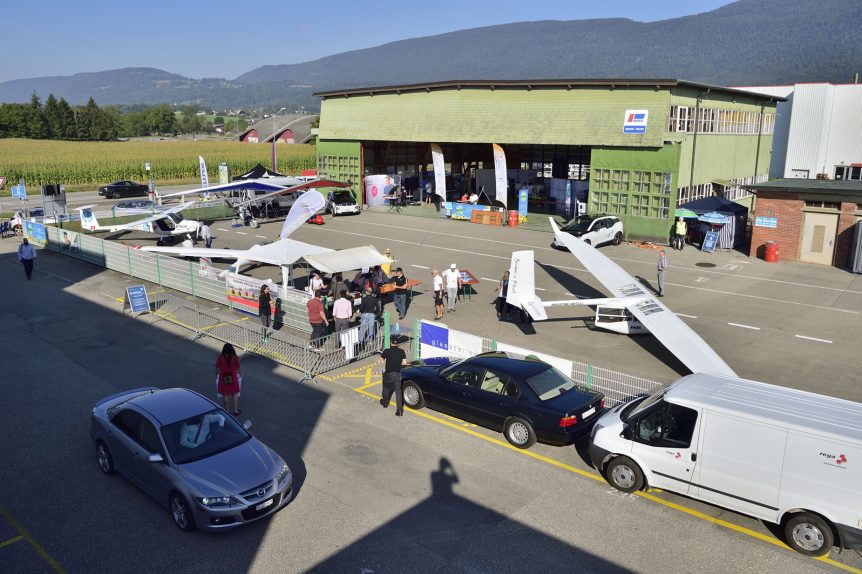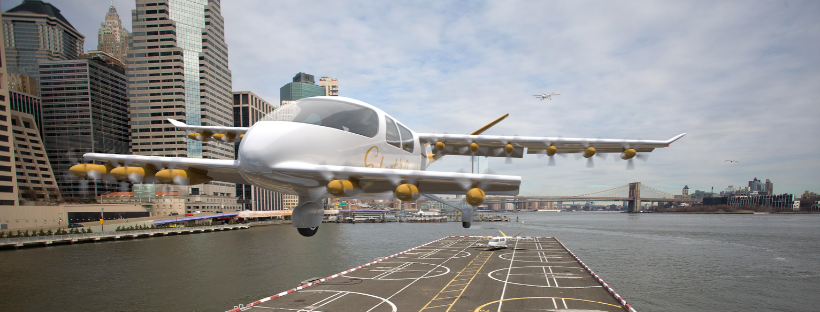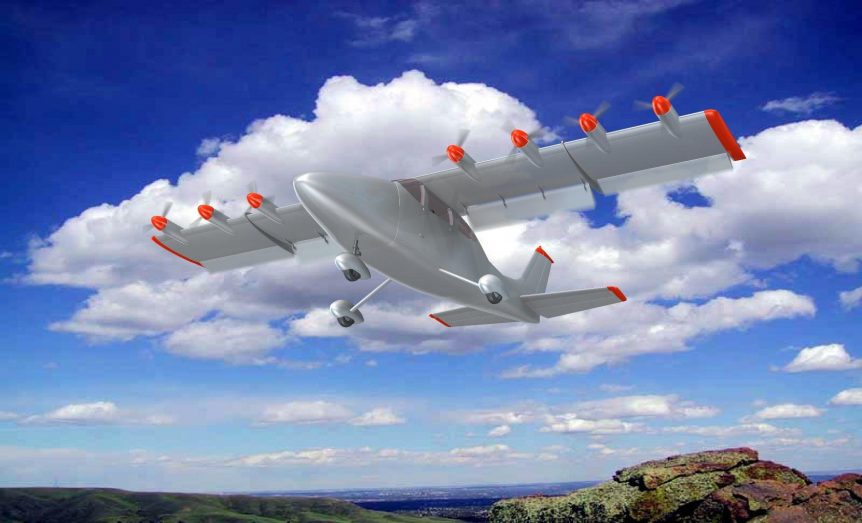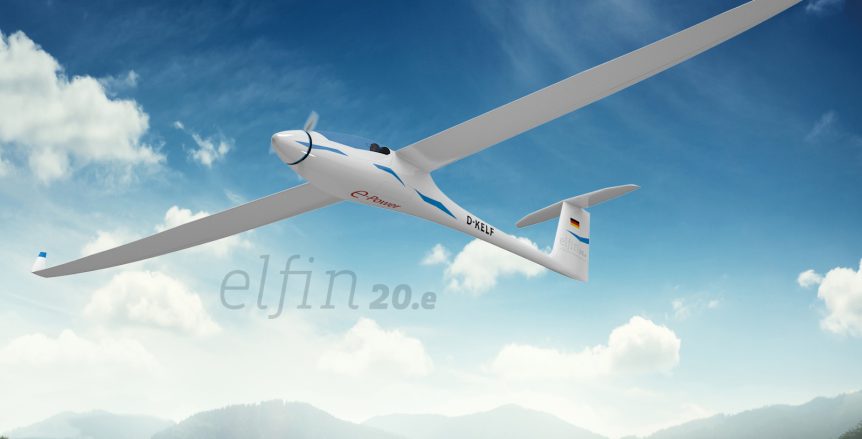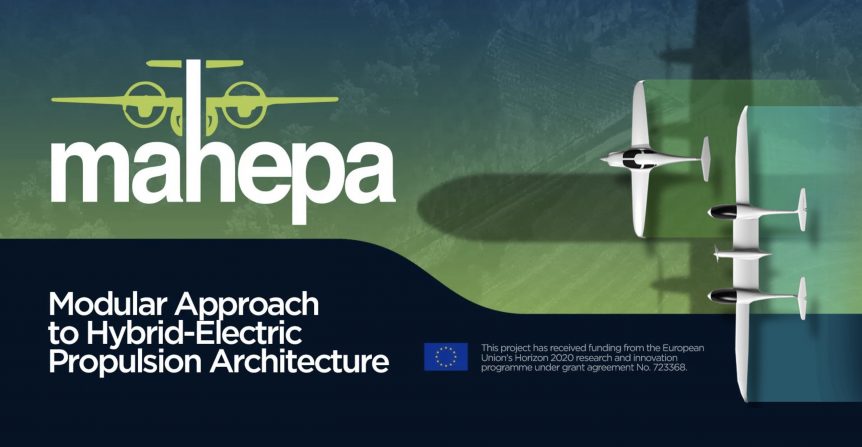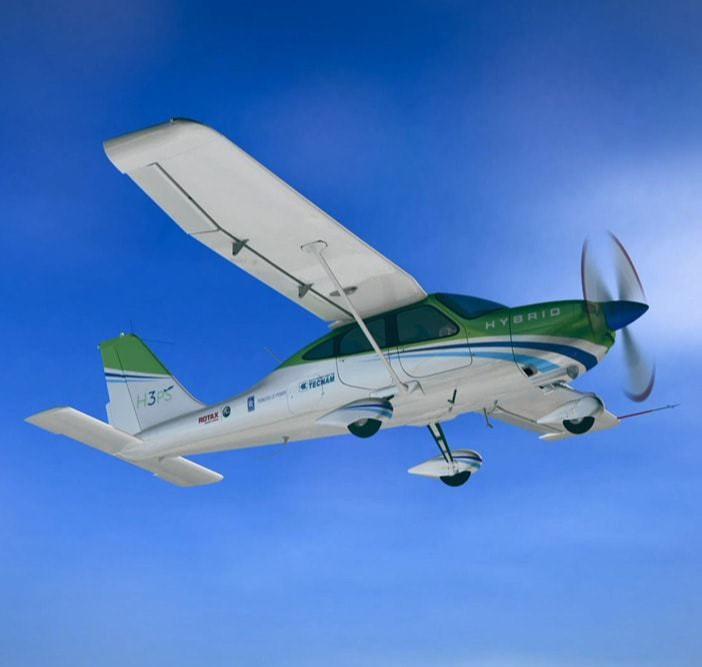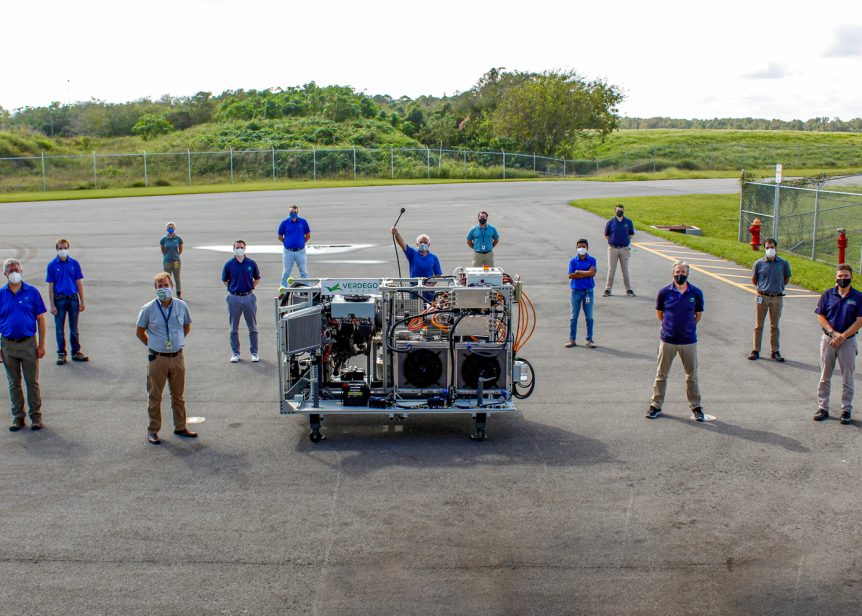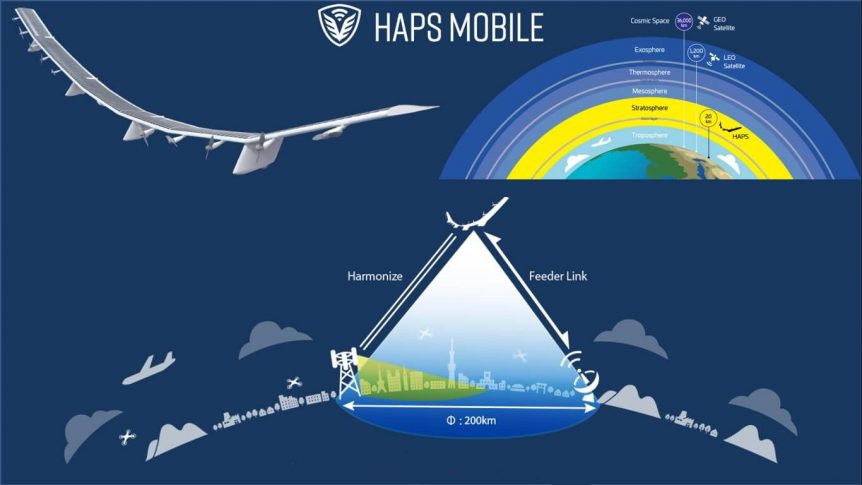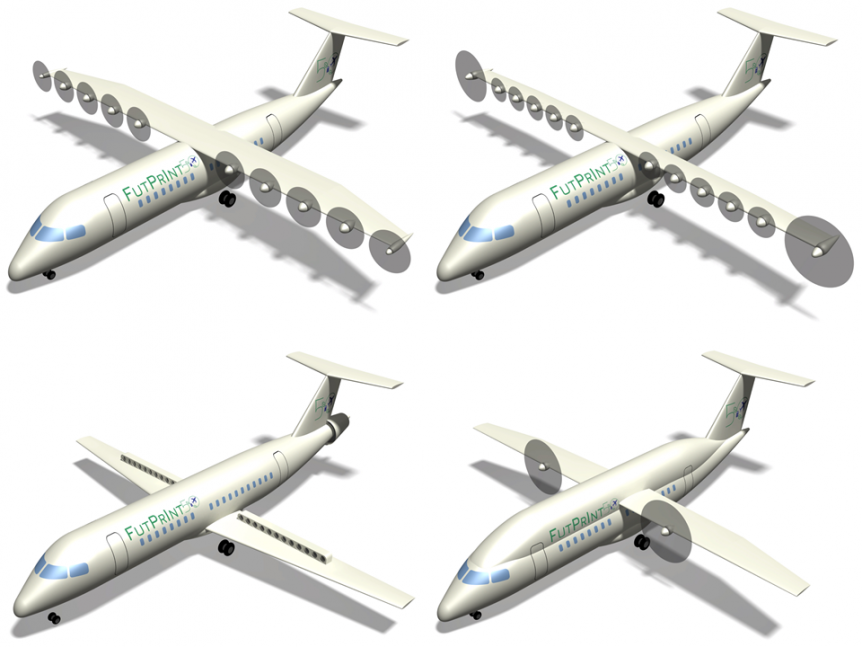Electrifly-in, formerly the Smartflyer Challenge, is on for September 11 and 12, 2021, in Grenchen, Switzerland. The event, even held in 2020 despite the pandemic, is a compact showing of the latest in electrical aircraft and technology. Watch as this 2019 video as a Φnix (the Greek letter phi + nix –a clever bilingual pun) takes off, circuits the area and makes a landing – all the time flying with other electric aircraft. In this flight, you can see the compact airport (including a grass landing strip) and a lovely setting for a great event. Started as the Smartflyer Challenge* in 2016, the gathering has changed its name to be more inclusive. Last year, even with travel limitations imposed worldwide, saw a healthy turnout of all-electric flyers, ranging from ultralight electric “trikes” to cross-country tourers. From 12 to 50 Kilowatts and Beyond Powering a large number of machines on last year’s flight line, Eck-Geiger Engineering makes a range of motors …
Two Hydrogen-Powered Aerial Vehicles
Two very different hydrogen-powered aerial vehicles have come to our attention, each with a different mission, but both with endurance and range as primary functions. Both use a fairly straightforward fuel cell/motor arrangement to power their flights. Vicor/DMI Fuel Cell Drones Doosan Mobility Innovation (DMI) is a major drone manufacturer, and their largest products push against the FAA’s 55-pound (24.97-kilogram) weight limit. Their DM30, powered with a DS30 fuel cell and a 10.8 liter H2 tank weighs 21 kilograms and can carry a five kilogram (11 pound) payload. Carrying a full payload may require using the smaller seven-liter tank. Alessandro Mascellino, writing in EE Power, describes recent combination of resources that makes long-range drone deliveries possible. “The first machines built as part of the collaboration can fly two hours on a single charge and have already transported masks and emergency supplies between US Virgin Islands. The drones feature a number of power components by Vicor.” Partnering with Vicor, Doosan provides …
eCSTOL: Longer Range Commutes on Less Power
Competition is growing in the electric Vertical Take Off and Landing market, with 407 potential builders listed in eVTOL News. Vertical flight takes power, though, and with available batteries limiting range, most such vehicles can make only short hops. Alternatives that allow speedier, longer flights, in the form of electric Conventional Short Take Off and Landing (eCSTOL) aircraft are in development. Such craft offer the benefit of requiring less power for takeoffs and climbs, being more aeronautically-based than power-based. Airflow, for instance, claims operating costs for their eCTSOL craft is one-third that of an eVTOL or helicopter. We will look at three eCSTOL craft that seem to making headway at this time. The infrastructure (in two cases below) to support their flight may already exist. Airflow Curt Epstein, writing in Future Flight, under the headline, “Infrastructure Needs for eSTOL and eVTOL Aircraft May be Closer than Imagined,” notes the “intense study” being undertaken. Speaking at the Vertical Flight Society’s Electric …
Airflow Moves toward Full Scale eCSTOL, AI
Airflow, a recent entry into the electric conventional short takeoff and landing (eCSTOL) market, is pushing forward into fielding a full-scale demonstrator. They are also testing the limits of Artificial Intelligence (AI) in nailing their landings. Airflow’s mission is spelled out in big ideas and bold fonts. “Freight without the wait. The first electric Short Take Off and Landing (eSTOL) aircraft for middle-mile logistics. 1 pilot, 500 lbs of cargo, 0 lbs of CO2.” Airflow’s concept illustrations show a twin-boom pusher with 10 distributed electric motors along the wing’s leading edge. Trying out their ideas for extremely short takeoffs and landings will fall to a modified Cessna 210. In the meantime, the team is advancing its concept at this time with a model Cessna 150 and showing some success at nailing their landings. Airflow calls its pilot assistance program, “Virtual Tailhook,” and it seems to serve that purpose in making landings possible in a tight space. Videos show the progress …
Stemme Goes Electric with its New Elfin
Reiner Stemme designed his namesake sailplane 30 years ago and the overall design and his new Elfin retains the original pop-out nose cone, folding propeller configuration. The 50:1 glide ratio means this 20-meter (75-foot) span motorglider offers less than 40 pounds of drag at its maximum takeoff weight 0f 1984 pounds. That is a significant benefit for the new electrically-powered version – which can fly further and save its batteries for retrieval and go-arounds. In its latest iteration, the Stemme configuration is a totally new airframe being built by a totally new company, Reiner Stemme Aero GmbH. As explained on the new firm’s web site, “The Elfin design is a complete new development and [is] not base[d] upon the existing S10. REINERSTEMME.aero GmbH, the present company of Dr. Reiner Stemme, is not connected to STEMME AG.” A High-Flying Heritage Earlier Stemme designs have accomplished much in the way of efficient, high-performance flight. In 2014, Klauss Ohlman accomplished one trans-continental trip …
MAHEPA and HY4 Go High
MAHEPA (Modular Aproach to Hybrid-Electric Propulsion Architecture) is a European Union project to build emission-free aircraft. A public flight of Pipistrel’s HY4 hydrogen-powered, four-seat aircraft was the latest demonstration of the group’s progress. Challenging Objectives Overall, MAHEPA hopes to accomplish five objectives: Advancing the fuel-driven serial hybrid-electric Powertrain which uses a lightweight internal combustion engine (ICE), capable of running multiple fuels as the power generation module. Advancing the reliability of zero-emission serial hybrid-electric powertrain which uses a Proton Exchange Membrane (PEM) Hydrogen Fuel Cell (FC) as the power generation module. Advancing new airborne qualified, lightweight, high-power density components such as a 200 kW+ electric motor, a 100 kW+ generator and improved power electronics using Silicon Carbide (SiC) technology to increase efficiency of power transmission due to decreased switching losses. Developing “common building blocks” solutions also for different aircraft configurations, enabling the proliferation of powertrain modules between various aircraft. Gathering, analyzing and comparing in-flight performance and emission data in order to …
Tecnam Goes Electric in Parallel and with Batteries
Tecnam, an Italian aircraft producer noteworthy for supplying the base aircraft for NASA’s X-57 Maxwell distributed electric test vehicle, has two of its own electric craft under development. One will be a parallel-hybrid single-engine/motor four-seater with perhaps the smallest motor Rolls-Royce can supply. The other will employ a battery-only system to power an 11-seat commuter aircraft. Tecnam’s history, starting in 1948, includes the design and manufacture of over 33 types of aircraft, with deliveries of over 5,500 airframes in more than 65 countries. Parallel Power Introduced in 2018, the H3PS (“High Power High Scalability Aircraft Hybrid Powertrain”) project was a collaboration among Tecnam, BRP-Rotax and (at the time) Siemens, which supplied the electric motor. Siemens’ electric aircraft division has since been purchased by Rolls-Royce, taking over the motor part of the H3PS partnership. The setup is similar to that employed by Axter Aerospace, a Spanish company, in 2015. The video presents the different modes of power available, but Creedence Clearwater …
Erik, Eric, Dr. Anderson, Verdego and Hybrid Power
In a recent AVWeb Vodcast, Paul Bertorelli interviewed Embry Riddle’s Dr. Pat Anderson on the topic, “Why Electric Airplane Designers Are Turning to Hybrid Drives.” Battery energy-carrying capability has not fulfilled its promise yet, according to Anderson. The difference in energy density between fossil fuels and batteries is still too great to fulfill missions involving more than small craft and short distances for the most part. This outlook caused Dr. Anderson’s associates, Eric Lindbergh and Eric Bartsch to form Verdego Aero, dedicated initially to developing a Diesel-hybrid generator system. They corroborate Dr. Anderson’s sense of current battery technology, their web site answering “Why hybrid?” They explain, “Electric aircraft are at the forefront of aviation technology, but the energy density of current batteries isn’t yet high enough to support many mission types or aircraft designs. The power generation systems in the VerdeGo IDEP (Integrated Distributed Electric Propulsion) systems, which use Continental Jet-A Piston Engines, offer 4-8x the equivalent energy density of today’s …
What’s the HAPS?
What do a Japanese investment bank, a software network, balloons and a gigantic stratospheric flying wing called HAPS have in common? Let’s look at the players and then piece together this puzzle. Softbank According to Wikipedia, “SoftBank Group Corp.[11][12] is a Japanese multinational conglomerate holding company headquartered in Minato, Tokyo. SoftBank owns stakes in many technology, energy, and financial companies. It also runs Vision Fund, the world’s largest technology-focused venture capital fund, with over $100 billion in capital.[13][14] “The company is known for its leadership by founder Masayoshi Son.[15] It operates in broadband, fixed-line telecommunications, e-commerce, internet, technology services, finance, media and marketing, semiconductor design, and other areas. “SoftBank was ranked in the Forbes Global 2000 list as the 36th largest public company in the world,[16] and the second largest publicly traded company in Japan after Toyota.” SoftBank’s web site promotes the “Information Revolution” as “Happiness for everyone.” The bank explains, “Since our founding, the SoftBank Group has sought to promote the Information Revolution to contribute to the wellbeing of people and society.” The Group …
DLR’s Novel Configurations
Researchers from the German Aerospace Center (Deutsches Zentrum für Luft- und Raumfahrt; DLR) conducting research into the potential of new types of design have crafted novel configurations for future flight. The DRL and BDLI (German Aerospace Industries Association or Bundesverband der Deutschen Luft- und Raumfahrtindustrie) have published a white paper: “Zero Emission Aviation – Emissionsfreies Fliegen” explicating these configurations. Surprisingly, one of their major findings is that “Electric flight enables lighter aircraft with smaller wings and distributed propulsion systems.” Battery weight has caused MagniX and Ampaire to reduce the number of passengers or the cargo loads on conversions of existing airframes. To counter those issues, “An EU research project is investigating the potential for new propulsion systems and aircraft concepts.” Obviously, these new concepts will need to take advantage of advanced materials to lower airframe weight. Hybrids and Hydrogen Thousands of airliners parked in dry desert locations highlight how the COVID crisis has affected air travel. Despite the ongoing interlude …

